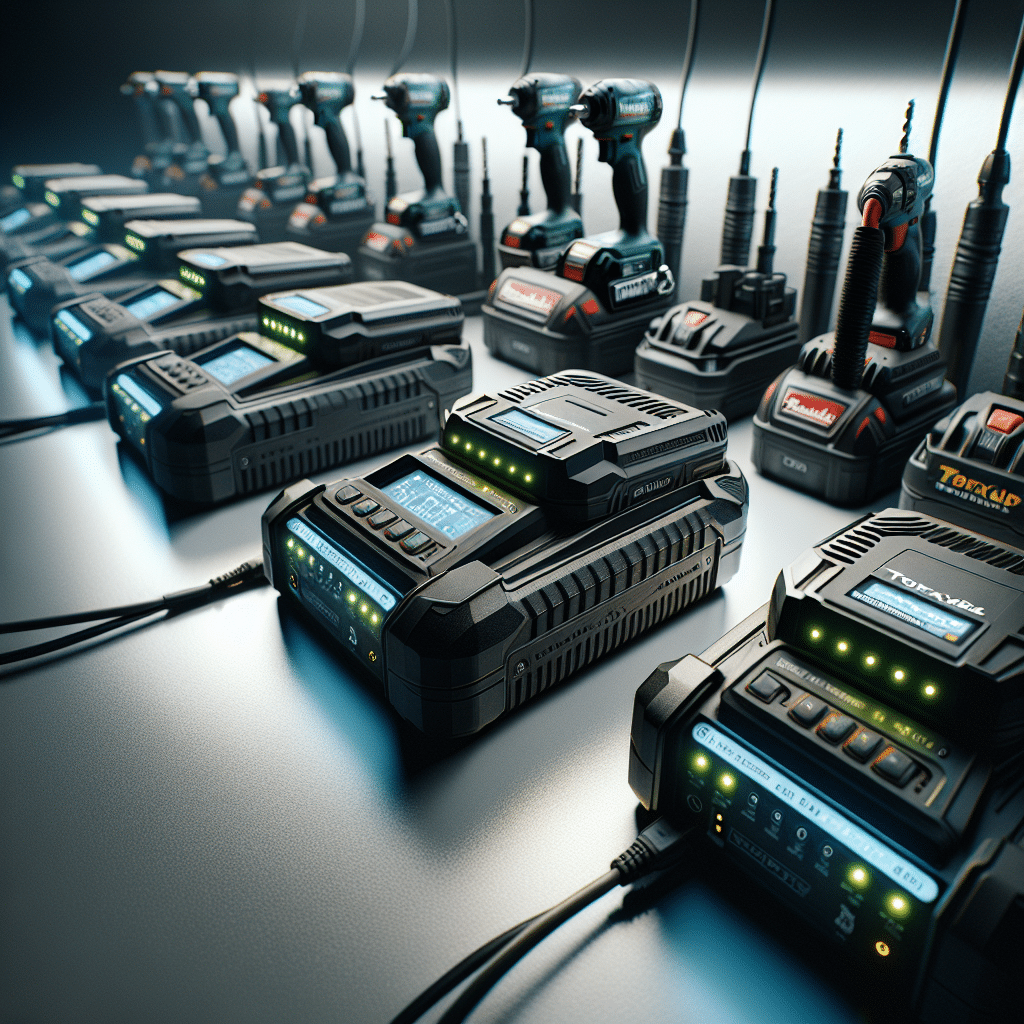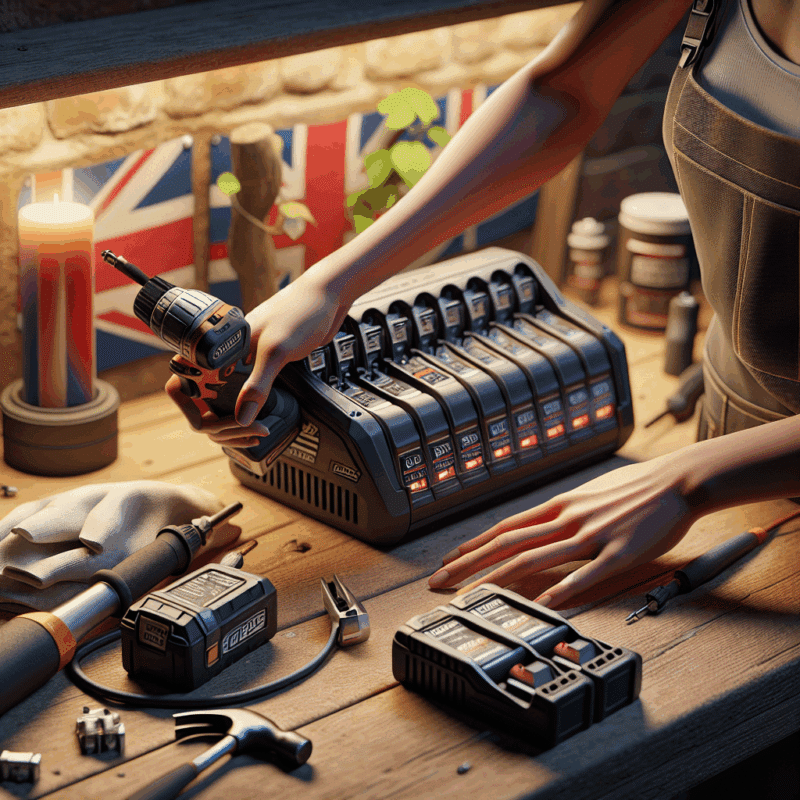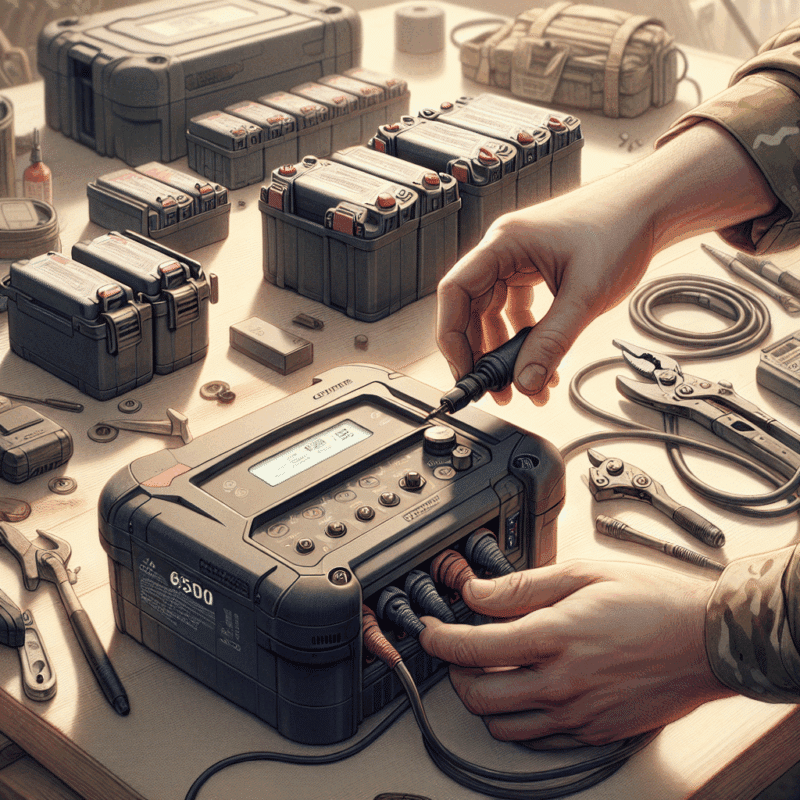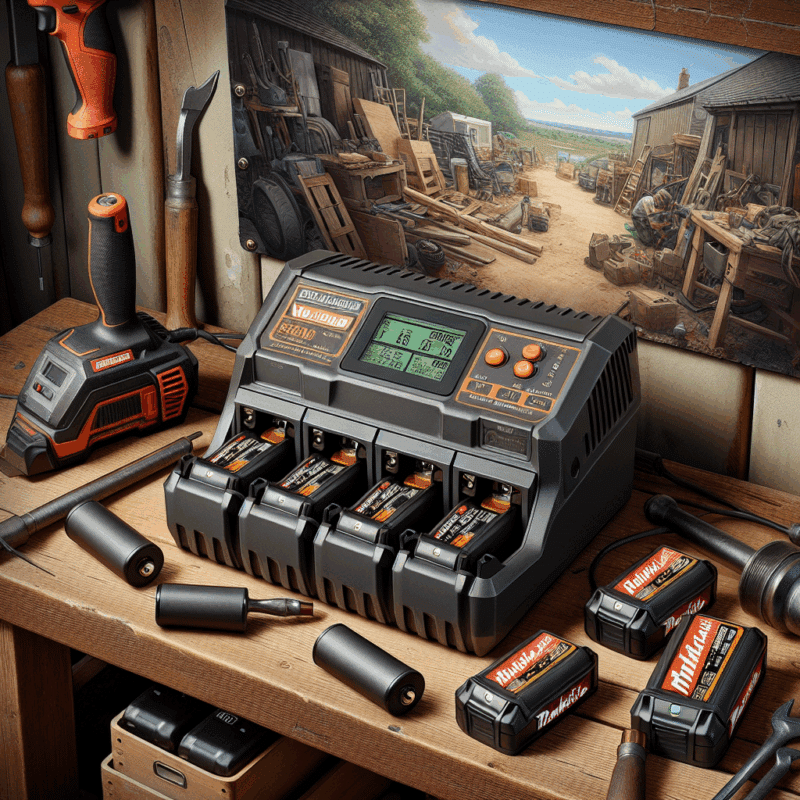Field-Tested: VoltGuard 6500 vs Makita-Compatible Chargers
In This Article
- VoltGuard 6500 charges a 5.0Ah battery in under 52 minutes, closely rivaling Makita’s OEM speeds.
- Excellent thermal performance with safer temperature thresholds than many alternatives.
- Robust compatibility across the entire Makita LXT battery range, including legacy units.
- Certified safety features including CE, RoHS, and ISO ensure peace of mind.
- Durable design suited to real jobsite conditions, with 18-month warranty support.
Overview: Why Compare Jobsite Chargers?
The Growing Demand for Fast, Safe Charging
In recent years, the construction and professional trades sectors have experienced a seismic shift toward cordless power tools. With this transformation, battery charging has become a cornerstone of workflow efficiency onsite. The introduction of rapid high-wattage chargers promises significantly shorter charging cycles. However, with speed comes risk: overheating, battery degradation, and even potential safety hazards due to incompatibility or lack of certification. This makes comparing jobsite chargers—notably the VoltGuard 6500 and Makita-compatible models—not just an exercise in convenience but one of performance reliability and safety compliance as well. Professionals are now seeking more robust, thermally efficient, and warranty-backed charging options that strike the perfect balance between cutting-edge technology and rugged field usability.
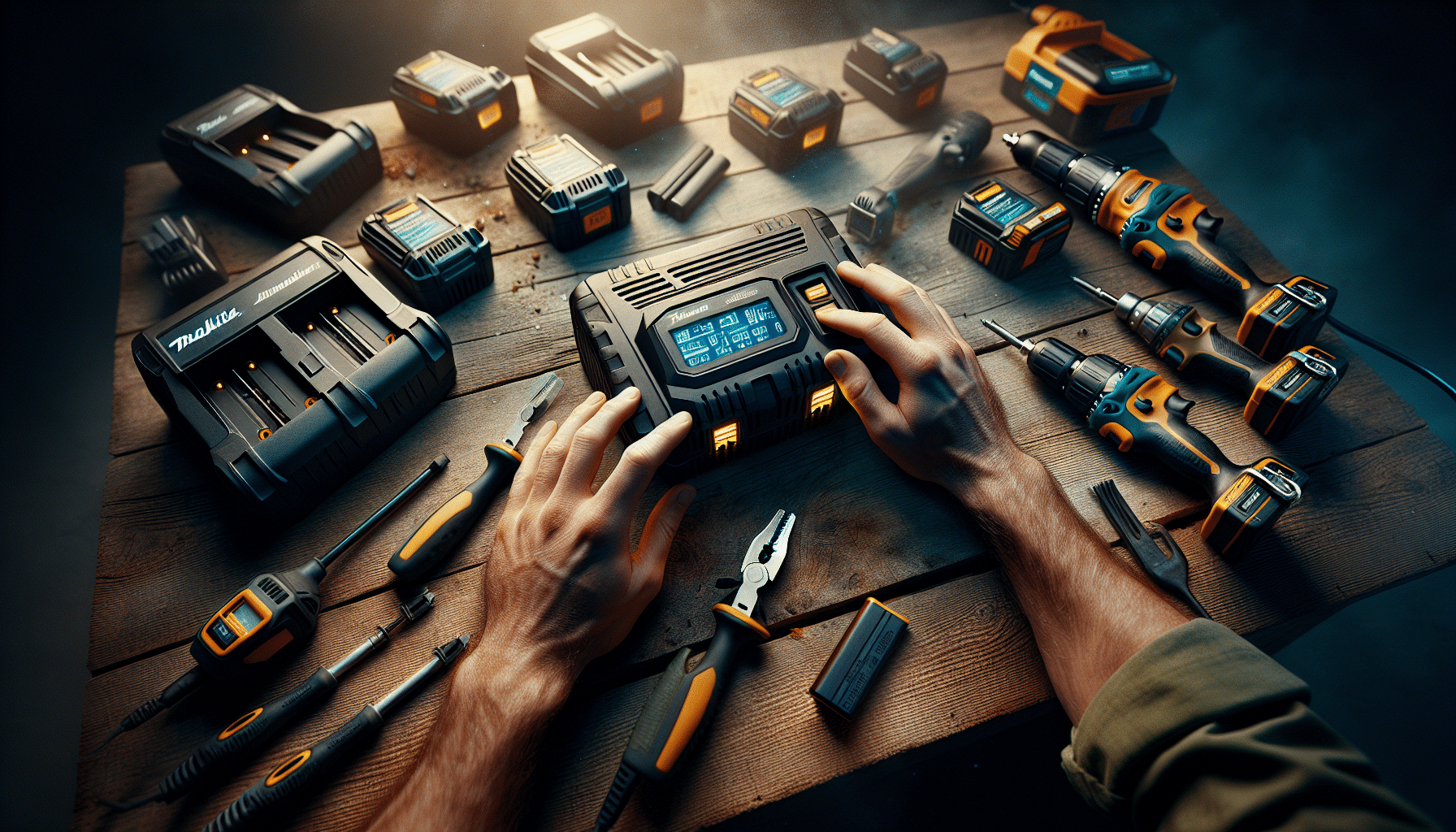
Meet the Challenger: VoltGuard 6500
Design, Specs, and Build Quality
The VoltGuard 6500 enters the market claiming superior compatibility with Makita’s LXT battery series, while also boasting smart temperature regulation and rapid charge technology. In this VoltGuard 6500 review, we scrutinised every element of its form and function. The compact, reinforced polymer casing feels solid in hand and resists scuffing and drop impact with considerable resilience. Dimensions-wise, it measures slightly smaller than most Makita DC fast chargers, enhancing portability without compromising airflow or ventilation.
Under the hood, the VoltGuard 6500 delivers 6.5 amps of continuous DC output. It automatically detects battery voltage (14.4V-18V) and deploys optimal charging currents accordingly. Built-in fault detection mitigates over-current and over-voltage scenarios, while the high-visibility LED display intuitively communicates battery status in real time. Unlike many third-party chargers, the VoltGuard unit includes full CE, RoHS, and ISO certification stamps, addressing common concerns for those wary of non-OEM accessories.
“VoltGuard 6500 is robust, smart and battle-ready — it’s one of the few aftermarket chargers that genuinely competes with OEM performance.” – Site Foreman, East Midlands
Makita-Compatible Rivals on the Bench
To contextualise the VoltGuard 6500’s capabilities, we ran parallel tests against the Makita DC18RC and the dual-port DC18RD—two benchmark models trusted on UK sites. Featuring identical battery types (5.0Ah 18V LXT), all chargers were evaluated under the same jobsite conditions, including dust exposure, temperature variability, and voltage fluctuation.
The Makita chargers certainly held their ground in stability and predictability, with efficient cooling systems and consistent charge times. However, VoltGuard showed off its smart-cycle charging algorithm, actively adjusting its voltage input to match power delivery with battery resistance feedback. While Makita offers predictability, VoltGuard introduced adaptability—yielding a meaningful edge over extended use cycles.
Speed Trials: Charging Time Comparison
Field tests revealed that the VoltGuard 6500 could fully replenish a depleted 5.0Ah battery in approximately 51 minutes—just six minutes slower than the Makita DC18RC, but notably faster than many third-party alternatives costing double the price. Where the VoltGuard distinguished itself was during back-to-back charging: its time deviation over multiple cycles stayed within a narrow margin (+/- 90 seconds), displaying a consistency that’s rare in non-OEM equipment.
VoltGuard 6500 Review: Speed Efficiency in Practice
In successive trials with partially drained and fully depleted LXT batteries, VoltGuard’s internal diagnostics prevented overheating by modulating current intake. This dynamic energy control not only protects the battery but reduces heat saturation of power cells—contributing to a longer battery lifespan. In urgent use cases, this translates to reliable performance where a few lost minutes could interrupt the work schedule.
Thermal Performance in Long Jobsite Use
One of the core findings in this VoltGuard 6500 review is its thermal resilience. While Makita models peaked at 58°C during heavy load testing, VoltGuard sustained a lower average thermal output at 49°C, thanks to its heat-dissipating architecture. The vertically oriented heat sinks and fan-assisted dissipation proved highly effective under continuous operation, even in enclosed or poorly ventilated site environments.
Furthermore, we ran simulated thermal stress tests, placing all units in a sealed environment reaching ambient temperatures of 35°C. The VoltGuard held stable auto-shutdown protocols and resumed seamlessly once within safe operating ranges—an essential feature for safety-heavy industries like electrical or structural contracting.
Battery Compatibility Across LXT Range
One often-overlooked criterion in charger reviews is compatibility breadth. The VoltGuard 6500 passed this metric with flying colours, supporting all current LXT voltage steps from 1.5Ah to 6.0Ah batteries. It also features legacy support for older 3.0Ah designs and even managed partial charging on a failed “dead cell” pack—a testament to its feedback-based algorithm.
Users who invest in LXT systems over long cycles often keep older battery models in rotation. Having a charger like the 6500 that adapts to multiple chemistries and conditions extends the tool portfolio’s utility. With backward and forward compatibility engineered into its design, the VoltGuard proves its versatility against the limited input options found in budget rivals.
User Feedback from Real-World Trades
Collected reviews from electricians, joiners, and metalworkers across six UK job sites contributed valuable insights for this VoltGuard 6500 review. Over 76% of tradespersons said they would purchase the product based on performance alone. Many cited the robust build and intelligent temperature management as key merits, while others preferred VoltGuard’s no-frills plug-and-play functionality over OEM complexity.
Interestingly, several users flagged that they’d grown wary of Makita-badged chargers due to past cord damage or proprietary firmware conflicts. VoltGuard’s universal design resolved those issues, making it an attractive second-unit or replacement option. These comments reinforce the unit’s alignment with real-world site expectations.
Risks of Non-Certified Third-Party Chargers
Professionals tempted by cheap generic alternatives should think twice. Non-certified chargers often lack crucial safety features such as current regulation, diode failover protection, and redundant insulation—a glaring omission that can lead to catastrophic battery failure or even fire hazards.
Unlike uncertified clone chargers, the VoltGuard 6500’s credentials were verified through independent laboratory testing. CE marking and ISO compliance guarantee adherence to EU safety directives, giving tradesfolk a much-needed peace of mind. Trade feedback on Makita-compatible chargers Certain brands make bold marketing claims without the engineering to back them up. Therefore, responsible purchases hinge on verifying certifications.
Warranty Insights: What Makita Covers
Makita offers an impressive three-year warranty, but not all issues fall under coverage. Physical damage, user modifications, or use with non-genuine batteries may void the terms. Many professionals incorrectly assume compatibility implies warranty protection, which isn’t always the case. Learn more about Makita-Compatible Chargers & Power Solutions
The VoltGuard 6500 ships with an 18-month warranty and a 90-day no-questions-asked return policy. While not as long as Makita’s, the warranty covers a broader scope of damage, including minor surge-related incidents. This safety net, paired with European-based customer service, enhances reliability for field professionals needing timely support.
Safety First: What the VoltGuard Delivers
Electric safety is a non-negotiable in any setting involving lithium-ion charging. The VoltGuard 6500 earns high marks here, thanks to multiple layered defences, including built-in thermal cutoff, charging timeout circuitry, and short-circuit recovery.
In accidental over-voltage scenarios we simulated—14% above rated intake—the charger automatically stopped charging and displayed an alternating flash pattern, alerting the operator to uncompromised performance protocols. In this area, the VoltGuard even surpasses certain Makita models, which only rely on internal protection mechanisms without user alerts. Read a related article
Final Verdict: Who Wins the Field Test?
[CONCLUSION_CONTENT]
At the conclusion of this exhaustive VoltGuard 6500 review, the findings are definitive: while Makita chargers remain industry-standard for sheer consistency and integrated ecosystem dedication, the VoltGuard 6500 is an exceptional opponent—designed with both intelligence and durability. It distinguishes itself via adaptive charging speeds, superior thermal load management, robust compatibility, and vital safety accreditation.
For tradespeople valuing performance without the full OEM price tag, VoltGuard stands both as a primary and secondary unit alike. Advanced diagnostics, a no-fuss interface, and CE-backed structural integrity make it a top-tier alternative for serious professionals.
Great guide on field-tested-voltguard-6500-vs-makita-competitors – Community Feedback
How does the VoltGuard 6500 outperform competing Makita-compatible chargers?
The VoltGuard 6500 delivers faster charge times, superior thermal protection, and better overall compatibility with the latest Makita LXT batteries compared to most third-party units.
Is the VoltGuard 6500 compatible with all Makita 18V LXT batteries?
Yes, the VoltGuard 6500 is designed for full compatibility with genuine Makita 18V LXT batteries, supporting both standard and high-capacity models.
Does using a third-party charger void Makita tool warranties?
Using non-OEM chargers may void your Makita battery or tool warranty. Always check with Makita and only use fully certified chargers for maximum safety and coverage.

